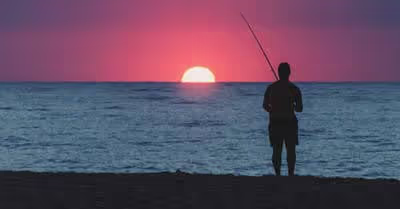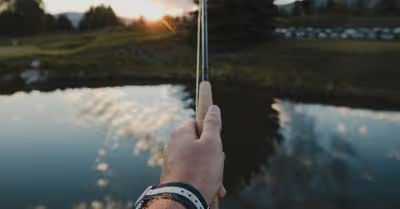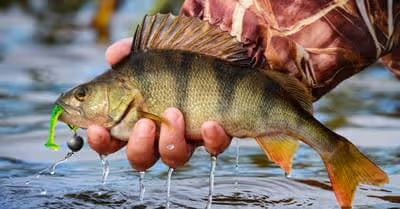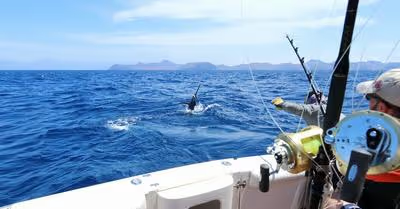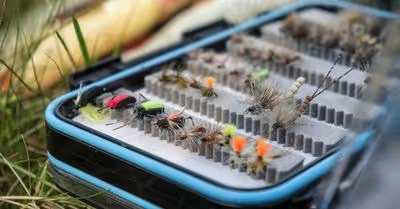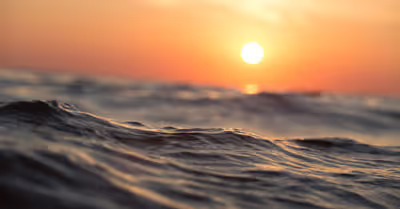Table of Contents
What is a Popper?
A popper is a manmade lure that's hollow-bodied made to float and produce popping sounds as it moves on the water to attract fish. It resembles a small fish. When tossed in the water, it mimics the jerky movements of a dying or wounded baitfish. It has hooks in the middle and at the back.
Popper fishing is a great and fun activity as you watch and catch fish such as bass and bluefish. The most exciting part is when you see explosions on the surface as water fish attack the lure. You start by rigging the popper lure to a fish line, and then you cat it in a spot where you suspect to have fish and reel it slowly towards you.
As you reel the lure in, you need to make subtle twitches using the fishing rod to produce the popping sounds that attract the fish. Once you feel a bite, you need to snap the rod, set the hook, and reel your catch.
Poppers are usually used for catching tuna, bass, giant trevally, among other fish. The poppers come in varying sizes and colors. If you're targeting the bigger fish, you also need to use a big popper. For example, you can use a small popper while fishing bass, whereas you'll need a big popper when targeting a GT.
Poppers typically mimic struggling baitfish, amphibians, and insects as they splash water on the surface. Since most predatory fish are opportunistic, they attract without question, making them vulnerable to this trick. The poppers target the fish's instinct besides adding excitement to your fishing expedition.
Although poppers come in varying shapes and sizes, most of them are cup-shaped. They make huge splashes on the water, creating sufficient noise underwater to entice the fish. Once the on-site, the fish will bite due to the action of the lure. Poppers are popularly used in the tropics to target fish such as wahoo, GT, and, yellow tuna, Spanish mackerel, among others.
Types of Poppers
Although you'll find scores of poppers in the market, they are mainly classified into two major categories-spitters and chuggers. These two are similar; what differentiates them is the sound of and disturbance they create on the surface of the water.
Spitters
Spitters have a similar design and shape as chuggers, but a closer look at the mouth shows you it's not symmetrical. The upper portion of the mouth sticks out further beyond the bait.
This helps to prevent the creation of a round bubble. Rather it spatters the water in front of the bait, thus its name, spitters. This action of spitting water in front of the bait produces a slightly softer sound. At times spitters will offer better results than a chugger and vice versa.
Some spitters feature a hole in the mouth that extends to the top; this enables water to exit from the top as the bait moves forward. This action produces a slightly different sound. It also increases your probability of making a catch. For example, bass may prefer other prey on specific days; these alterations increase your chances of succeeding catching the fish.
Chuggers
Chuggers are the classic popper lures famous for their popping sound on the surface of the water. As you pull this popper in a jerking motion, they turn over the water surface, creating a bubble of water over the bait.
When the bubble bursts, it generates the popping sound. This noise is similar to the sound of a water drop. The jerking motion also creates a round undulating ring of water around it. The hula popper is one of the best examples of a chugger.
How to Rig your Popper
Experienced anglers agree there different ways of rigging different types of poppers. In most cases, the shape of the popper determines the hook combination that will offer the best hook-up rate. The target species also plays a significant role in how you'll rig the popper.
For example, the substantial giant trevally, typically hits the poppers head, this means head-hooks are an excellent rigging option if you're targeting this species. You can make head hooks by yourself, although they are readily available in the market.
It's best to rig large poppers with a single hook on the hindmost eyelet and a Kevlar cord head-hook at the towing eyelet. Alternatively, you can use twin hooks on the front eyelet, a big single on the back eyelet, and have nothing on the towing eyelet. The twin hooks should be positioned back to back on the split ring. Use a zippy tie to keep them in position. It'll also eliminate fouling when casting and maximize hook-up potential.
Let's see one of the best ways of rigging your popper.
Step 1: Select a medium-sized rod
When rigging your popper, it's advisable to use a medium-sized rod. It will be of immense help when setting the hook. Besides, it helps you easily tire and fight the fish before pulling it out of the water. A medium sized fishing rod is between 1.8-2.1m (6-7ft). The ideal rod should be long enough to enable you to cast the popper in the right spot. Such rods are available online, in outdoor supply stores, or departmental stores.
Step 2: Ensure the rod is comfortable on your hands
The ideal braided line for rigging your popper should be around 18kg (40lb). You get the best results if you pair your popper to a study braided line. The fish should not easily spot the line. Experiment with braided line 14-to 18 kg (30-40pounds) and choose the best. Also, test the line to make sure it won't break when the fish is grabbing the bait. When rigging your popper lure, spool-braid the fishing line on the reel or use a reel that already has a braided line. Alternatively, if you can get a braided line, you may use a monofilament line ranging from 7.7-9.1kg (17-20 pounds). These filaments can withstand significant force.
Step 3: The reel ratio
Set your reel at a higher gear ratio. This allows you to have sufficient time to set your hook in case a fish grabs your popper lure suddenly and decides to swim off. At least, you dial should be at a ratio of 7:1. Remember, some reels feature a preset ratio. In such a case, choose one with a higher gear ratio when fishing with poppers. Indication lines on the dial help you to know where you're setting the gear ratio.
Step 4: Secure the popper to your line
Finally, you need to set the popper on the line via tying a basic loop. You'll achieve this by slipping the line's end via the metal lop or eye on the popper's mouth. You need to push about 20cm (8 inches) of slack via the eye to enable you to form a knot. Keeping your fingers inside the loop, hold the eye using your thumb and index finger, allow it to back over itself. Wrap the line about five times around itself, thread its end via the loop, and complete the process by pulling it tight. Use a knife to trim any excess line. Ensure your popper is firmly held on the line and can't come off when the fish bites. The loop knot is the simplest and best way of securing the popper on the line.
Conclusion
Poppers are one of the simplest lures for fishing. They are ideal for beginners and professional anglers. You don't require a well-calculated strike detection or a finesse to make a catch if you're using a popper. You only need to make a basic retrieve by giving the rod a firm jerk and casting often. The lure should be at rest as you reel in the slackline.
If you monitor your progress, you won't miss seeing when making a bite. With poppers, you don't have to concentrate fully on the rod's feel to know when you're getting a bite. The bites, in this case, are either faint or explosive. In both cases, you closely watch to determine when to set the hook. If you've rigged your popper as described, you're assured of bites. The fish won't get an opportunity to escape with your bait.
Recent Articles



